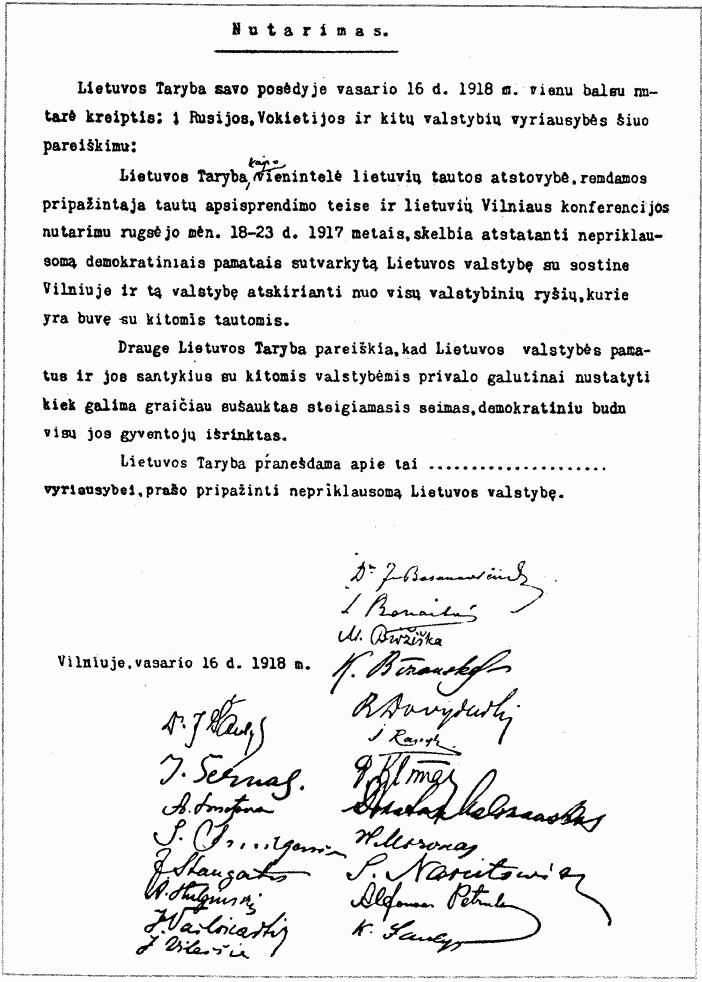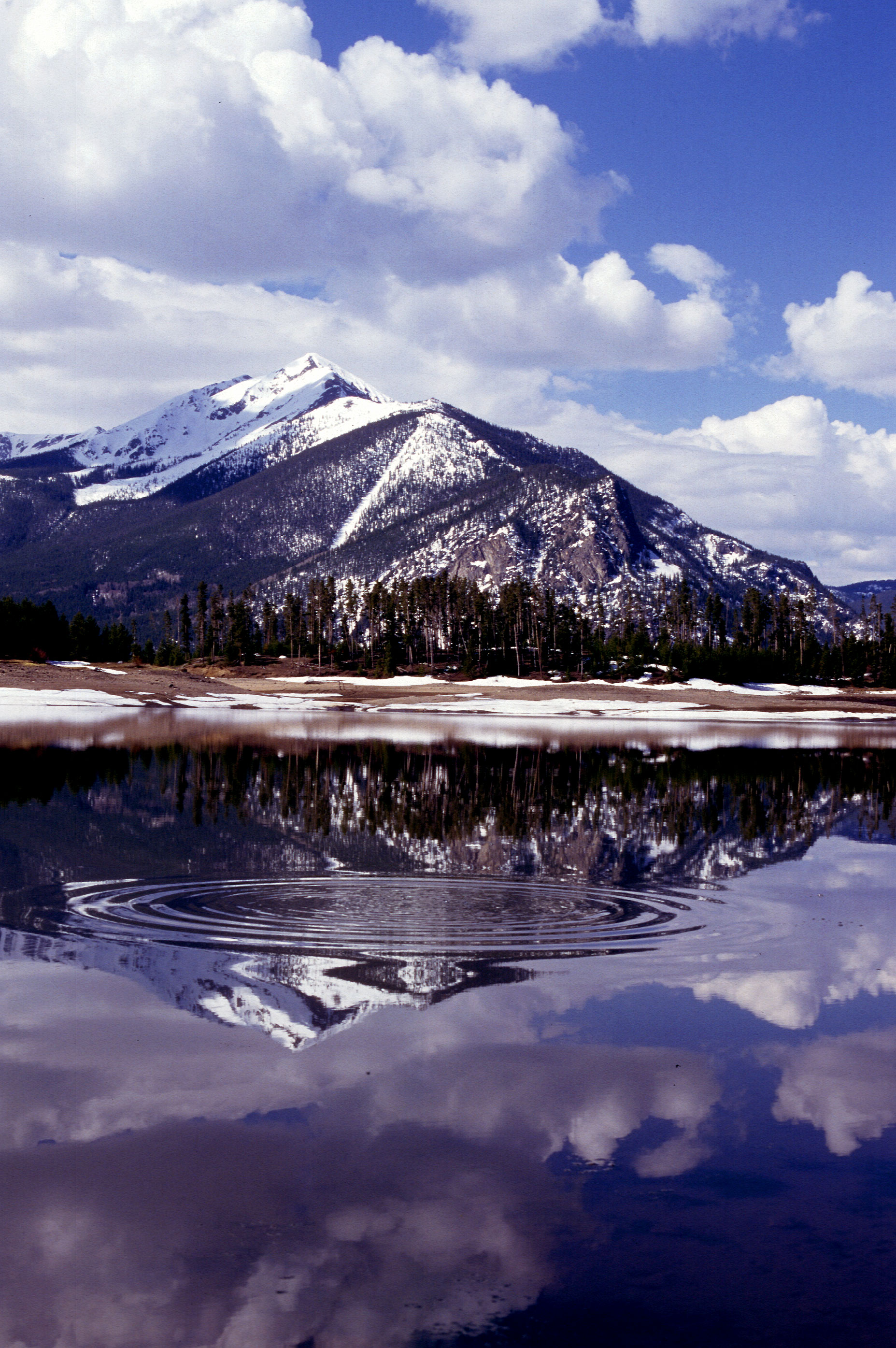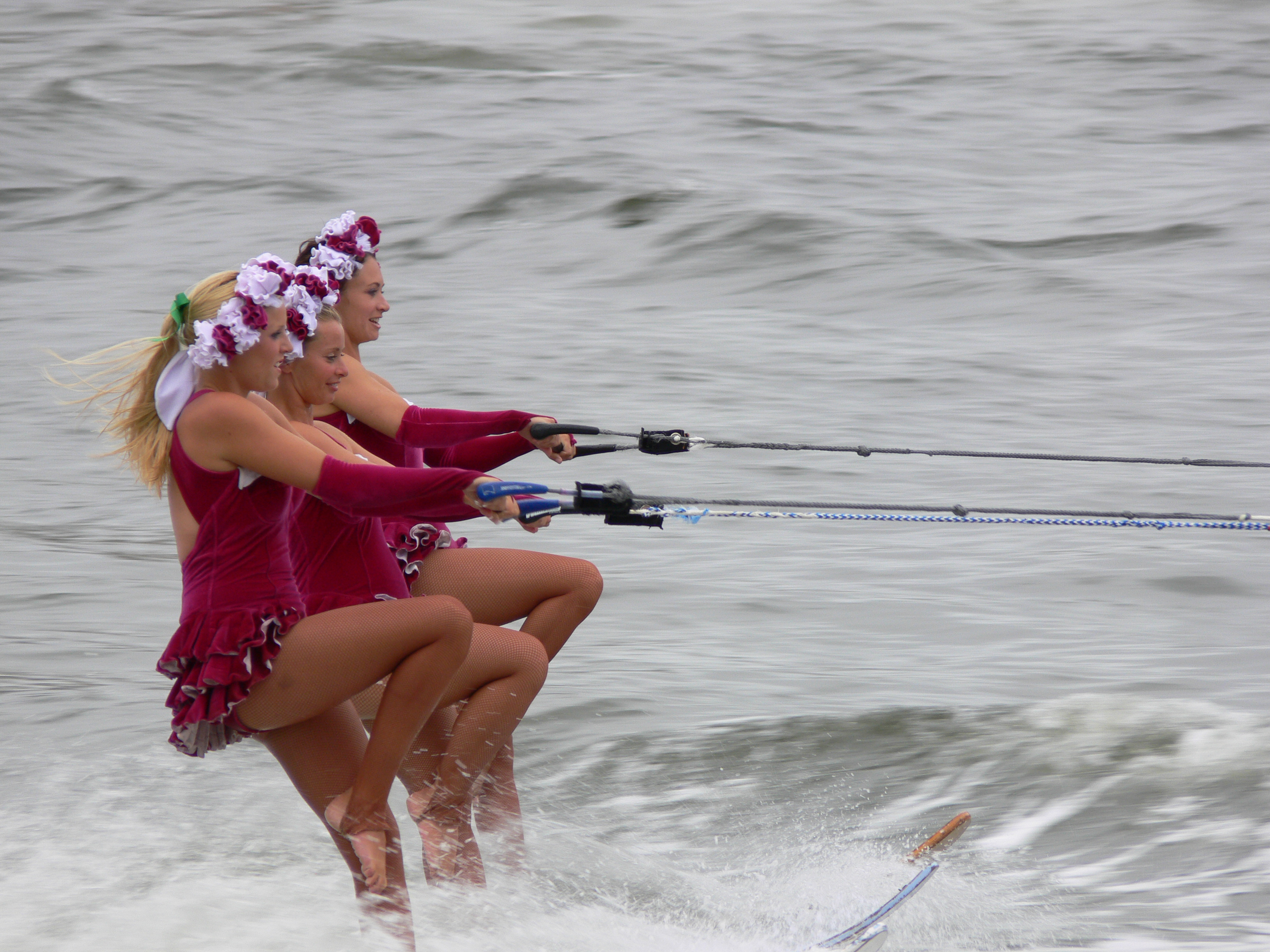|
Erich Windisch
Erich Alfred Windisch (born January 4, 1918, in Schöneck, Germany, died February 14, 2007, in Vail, Colorado) was a German Olympic ski jumper who developed in 1949 the jumping technique in which the jumper’s arms are slightly arched and pointing downward. Windisch's technique modified the previously popular Kongsberger technique and it was the standard form in elite jumping competition until the current standard V-style technique was developed by Jan Boklöv in 1985. During World War II, Windisch was a captain in the German army’s mountain troops, serving in Russia. After the war, he taught the Mountain Troops of the 3rd US Army. He later was the director of a ski school at Schneefernerhaus on Zugspitze near Garmisch. In 1949, Windisch was pivotal in the evolution of ski jumping, changing the forward arm movement for balance, to a position of arms alongside the body. He had to do so because of a dislocated shoulder, which forced him to jump with his hands at his sides. He w ... [...More Info...] [...Related Items...] OR: [Wikipedia] [Google] [Baidu] |
Schöneck, Saxony
Schöneck (also: Schöneck/Vogtl.) is a town in the Vogtlandkreis district, in the Free State of Saxony, Germany. It is situated southeast of Plauen, and north of Cheb. Schöneck is known as the biggest ski resort in the eastern part of Germany. With more than 700 m (church) it is the highest-located town in the Vogtland district. It is in the 'music corner', a region so-called because of its history of production of musical instruments. Town structure The districts of Schöneck are Arnoldsgrün, Eschenbach, Gunzen, Korna, Kottenheide, Schilbach and Zwotental. History Schöneck became a town in 1370, but was first mentioned a century before this, when the castle ''castrum Schoennecke'' was mentioned as a mediaeval manor. After some devastating major fires (1632, 1680, 1761 and 1856), Schöneck took part in the industrialization of the 19th century. The town's main business became the cigar manufactory. In 1875, the railroad to Falkenstein and Klingenthal was built. The p ... [...More Info...] [...Related Items...] OR: [Wikipedia] [Google] [Baidu] |
Zugspitze
The Zugspitze (), at above sea level, is the highest peak of the Wetterstein Mountains as well as the highest mountain in Germany. It lies south of the town of Garmisch-Partenkirchen, and the Austria–Germany border runs over its western summit. South of the mountain is the ''Zugspitzplatt'', a high karst plateau with numerous caves. On the flanks of the Zugspitze are three glaciers, including the two largest in Germany: the Northern Schneeferner with an area of 30.7 hectares and the Höllentalferner with an area of 24.7 hectares. The third is the Southern Schneeferner which covers 8.4 hectares. The Zugspitze was first climbed on 27 August 1820 by Josef Naus, his survey assistant, Maier, and mountain guide, Johann Georg Tauschl. Today there are three normal routes to the summit: one from the Höllental valley to the northeast; another out of the Reintal valley to the southeast; and the third from the west over the Austrian Cirque (''Österreichische Schneekar''). One ... [...More Info...] [...Related Items...] OR: [Wikipedia] [Google] [Baidu] |
German Male Ski Jumpers
German(s) may refer to: * Germany (of or related to) **Germania (historical use) * Germans, citizens of Germany, people of German ancestry, or native speakers of the German language ** For citizens of Germany, see also German nationality law **Germanic peoples (Roman times) * German language **any of the Germanic languages * German cuisine, traditional foods of Germany People * German (given name) * German (surname) * Germán, a Spanish name Places * German (parish), Isle of Man * German, Albania, or Gërmej * German, Bulgaria * German, Iran * German, North Macedonia * German, New York, U.S. * Agios Germanos, Greece Other uses * German (mythology), a South Slavic mythological being * Germans (band), a Canadian rock band * "German" (song), a 2019 song by No Money Enterprise * ''The German'', a 2008 short film * "The Germans", an episode of ''Fawlty Towers'' * ''The German'', a nickname for Congolese rebel André Kisase Ngandu See also * Germanic (other) ... [...More Info...] [...Related Items...] OR: [Wikipedia] [Google] [Baidu] |
2007 Deaths
This is a list of deaths of notable people, organised by year. New deaths articles are added to their respective month (e.g., Deaths in ) and then linked here. 2022 2021 2020 2019 2018 2017 2016 2015 2014 2013 2012 2011 2010 2009 2008 2007 2006 2005 2004 2003 2002 2001 2000 1999 1998 1997 1996 1995 1994 1993 1992 1991 1990 1989 1988 1987 See also * Lists of deaths by day * Deaths by year {{DEFAULTSORT:deaths by year ... [...More Info...] [...Related Items...] OR: [Wikipedia] [Google] [Baidu] |
1918 Births
This year is noted for the end of the First World War, on the eleventh hour of the eleventh day of the eleventh month, as well as for the Spanish flu pandemic that killed 50–100 million people worldwide. Events Below, the events of World War I have the "WWI" prefix. January * January – 1918 flu pandemic: The "Spanish flu" (influenza) is first observed in Haskell County, Kansas. * January 4 – The Finnish Declaration of Independence is recognized by Soviet Russia, Sweden, Germany and France. * January 9 – Battle of Bear Valley: U.S. troops engage Yaqui Native American warriors in a minor skirmish in Arizona, and one of the last battles of the American Indian Wars between the United States and Native Americans. * January 15 ** The keel of is laid in Britain, the first purpose-designed aircraft carrier to be laid down. ** The Red Army (The Workers and Peasants Red Army) is formed in the Russian SFSR and Soviet Union. * January 18 - The Historic Concert for ... [...More Info...] [...Related Items...] OR: [Wikipedia] [Google] [Baidu] |
Dillon, Colorado
The Town of Dillon is a home rule municipality located in Summit County, Colorado, United States. The town population was 1,064 at the 2020 United States Census, a +17.70% increase since the 2010 United States Census. Dillon is a part of the Breckenridge, CO Micropolitan Statistical Area. History The original town of Dillon was built as a stage stop and trading post on the northeast side of the Snake River. The town was named for Tom Dillon, a prospector, and was incorporated in 1883. By 1892 the town had been relocated twice, both times in order to be closer to railroad lines that were extended into the area. All three of these historic townsites were situated very close to the Blue River Valley confluence where the Snake River and Tenmile Creek flowed in, and this area is now referred to collectively as "Old Dillon". During the Great Depression, Denver Water began acquiring land around Dillon. In 1956, residents and business owners in Dillon were notified that they woul ... [...More Info...] [...Related Items...] OR: [Wikipedia] [Google] [Baidu] |
Norway
Norway, officially the Kingdom of Norway, is a Nordic country in Northern Europe, the mainland territory of which comprises the western and northernmost portion of the Scandinavian Peninsula. The remote Arctic island of Jan Mayen and the archipelago of Svalbard also form part of Norway. Bouvet Island, located in the Subantarctic, is a dependency of Norway; it also lays claims to the Antarctic territories of Peter I Island and Queen Maud Land. The capital and largest city in Norway is Oslo. Norway has a total area of and had a population of 5,425,270 in January 2022. The country shares a long eastern border with Sweden at a length of . It is bordered by Finland and Russia to the northeast and the Skagerrak strait to the south, on the other side of which are Denmark and the United Kingdom. Norway has an extensive coastline, facing the North Atlantic Ocean and the Barents Sea. The maritime influence dominates Norway's climate, with mild lowland temperatures on the ... [...More Info...] [...Related Items...] OR: [Wikipedia] [Google] [Baidu] |
Oslo
Oslo ( , , or ; sma, Oslove) is the capital and most populous city of Norway. It constitutes both a county and a municipality. The municipality of Oslo had a population of in 2022, while the city's greater urban area had a population of in 2019, and the metropolitan area had an estimated population of in 2021. During the Viking Age the area was part of Viken. Oslo was founded as a city at the end of the Viking Age in 1040 under the name Ánslo, and established as a ''kaupstad'' or trading place in 1048 by Harald Hardrada. The city was elevated to a bishopric in 1070 and a capital under Haakon V of Norway around 1300. Personal unions with Denmark from 1397 to 1523 and again from 1536 to 1814 reduced its influence. After being destroyed by a fire in 1624, during the reign of King Christian IV, a new city was built closer to Akershus Fortress and named Christiania in honour of the king. It became a municipality (''formannskapsdistrikt'') on 1 January 1838. The city ... [...More Info...] [...Related Items...] OR: [Wikipedia] [Google] [Baidu] |
1952 Winter Olympics
The 1952 Winter Olympics, officially known as the VI Olympic Winter Games ( no, De 6. olympiske vinterleker; nn, Dei 6. olympiske vinterleikane) and commonly known as Oslo 1952, was a winter multi-sport event held from 14 to 25 February 1952 in Oslo, the capital of Norway. Discussions about Oslo hosting the Winter Olympic Games began as early as 1935; the city was keen to host the 1948 Winter Olympics, but that was made impossible by World War II. Instead, Oslo won the right to host the 1952 Games in a contest that included Cortina d'Ampezzo in Italy and Lake Placid in the United States. All of the Olympic venues were in Oslo's metropolitan area, except for the alpine skiing events, which were held at Norefjell, from the capital. A new hotel was built for the press and dignitaries, along with three dormitories to house athletes and coaches, creating the first modern athlete's village. Oslo bore the financial burden of hosting the Games in return for the revenue they gene ... [...More Info...] [...Related Items...] OR: [Wikipedia] [Google] [Baidu] |
Nordic Combined
Nordic combined is a winter sport in which athletes compete in cross-country skiing and ski jumping. The Nordic combined at the Winter Olympics has been held since the first ever Winter Olympics in 1924, while the FIS Nordic Combined World Cup has been held since 1983. Many Nordic combined competitions use the Gundersen method, where placement in the ski jumping segment results in time (dis)advantages added to the contestant's total in the cross-country skiing segment (e.g. the ski jumping winner starts the cross-country skiing race at 00:00:00 while the one with the lowest jumping score starts with the longest time penalty). History The first major competition was held in 1892 in Oslo at the first Holmenkollen ski jump. King Olav V of Norway was an able jumper and competed in the Holmenkollen Ski Festival in the 1920s. Nordic combined was in the 1924 Winter Olympics and has been on the program ever since. Until the 1950s, the cross-country race was held first, followed by th ... [...More Info...] [...Related Items...] OR: [Wikipedia] [Google] [Baidu] |
Water Skiing
Water skiing (also waterskiing or water-skiing) is a surface water sport in which an individual is pulled behind a boat or a cable ski installation over a body of water, skimming the surface on two skis or one ski. The sport requires sufficient area on a stretch of water, one or two skis, a tow boat with tow rope, two or three people (depending on local boating laws), and a personal flotation device. In addition, the skier must have adequate upper and lower body strength, muscular endurance, and good balance. There are water ski participants around the world, in Asia and Australia, Europe, Africa, and the Americas. In the United States alone, there are approximately 11 million water skiers and over 900 sanctioned water ski competitions every year. Australia boasts 1.3 million water skiers. There are many options for recreational or competitive water skiers. These include speed skiing, trick skiing, show skiing, slaloming, jumping, barefoot skiing and wakeski. Similar, re ... [...More Info...] [...Related Items...] OR: [Wikipedia] [Google] [Baidu] |
Oberstdorf
Oberstdorf (Low Alemannic: ''Oberschdorf'') is a municipality and skiing and hiking town in Germany, located in the Allgäu region of the Bavarian Alps. It is the southernmost settlement in Germany and one of its highest towns. At the center of Oberstdorf is a church whose tall spire serves as a landmark for navigating around town. The summits of the Nebelhorn and Fellhorn provide dramatic panoramic views of the alps. The Nebelhorn can be reached with a big cable car. Visitors can ride a unique diagonal elevator to the top of the Heini-Klopfer-Skiflugschanze. Geography Administrative divisions Oberstdorf consists of the village of Oberstdorf (813 metres above sea level, survey point by the Roman Catholic church) and five other villages: * ''Kornau'' , 915 m. In the vicinity is the Söllereckbahn and the Chapel of St. Fabian and St. Sebastian which is rich in art treasures. * In ''Reichenbach'' (population: 226) is the 450-year-old Chapel of St. James a ... [...More Info...] [...Related Items...] OR: [Wikipedia] [Google] [Baidu] |




